Norwich Tombland |
|
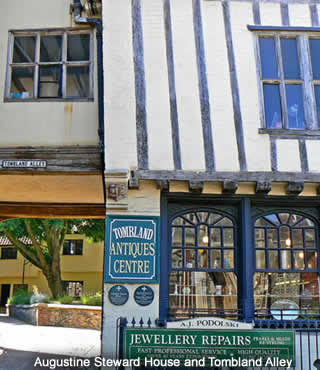 |
|||
Tombland was the site of the Anglo-Saxon market place, now a popular location for restaurants and pavement cafés |
||||||
|
||||||
Despite what it may sound like, the name Tombland has nothing to do with tombs, but is an old Scandinavian word meaning open space. The space here was used as the site of the Anglo-Saxon market place and centre of administration before the Normans arrived and changed this area of Norwich. Today in Tombland you’ll find many high quality restaurants and bars. |
||||||
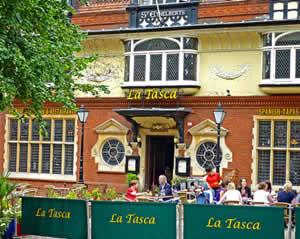 Pavement Restaurant in Tombland |
||||||
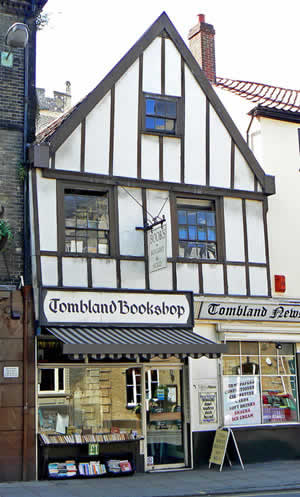 Old Bookshop in Tombland |
||||||
The magnificent gateway leading to the Cathedral is Erpingham Gate. This gateway was built around the year 1420 by Sir Thomas Erpingham, who is most famous as the commander of Henry V's archers at the Battle of Agincourt. He also had a prominent role in Norwich affairs, being a member of the local gentry who was called on by the local authorities to assist them in their dealings with the king. You can see a statue of Sir Thomas above the arch of the gateway and there are numerous other figures of saints and priests, leading to the theory Sir Thomas paid for the gate as a penance for a sin he had committed. You will notice the word Yenk engraved in the stone, meaning Think,Perhaps Sir Thomas had intended us to stand in front of his gateway and do exactly that! He died in 1428 and was buried inside the cathedral, in a tomb built in advance, alongside his two wives. |
||||||
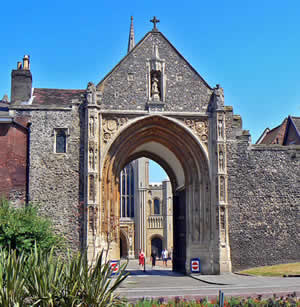 Erpingham Gate |
||||||
|
||||||
Ethelbert Gate is the other magnificent gateway leading to the Cathedral Close. The gate was rebuilt in 1316 by the citizens of Norwich as part of their penance and compensation for the damage caused during riots in 1272, including the burning of the original gate, the bell tower and most of the wooden buildings of the monastery. Notice the statue of a Madonna and Child, which is the central figure in the exterior wall of what was once a small chapel on top of the gate. The chapel was built to replace St. Ethelbert's church, which was also burned down by the rioters. |
||||||
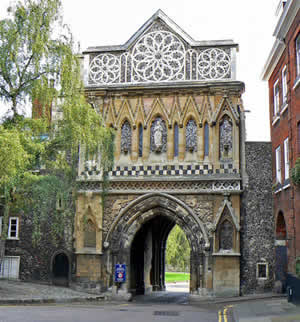 Ethelbert Gate |
||||||
Across the road from the gateways you will find Tombland Alley. At the entrance is the lop sided Augustine Steward house. Steward was a cloth merchant who built the house in 1530. You can see a merchant's mark in the passageway. Tombland Alley is a burial ground for the adjacent church of St George. The high walls contain mainly victims killed by the plague, the disease that took so many lives over the centuries. There used to be iron railings here to protect the graveyard and you can still see traces in the stone. |
||||||
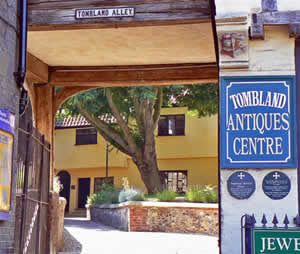 Tombland Alley |
||||||
Parts of the Maid's Head Hotel date back to 1287, when it was used by monks as a hospice. It later became a hotel called the Murtle Fish, owned by a Dutch refugee who brought his weaving talents to the city. In 1578 Queen Elizabeth I visited Norwich and she attended a banquet held in her honour at the hotel. The Queen spoke very kindly of the hotel saying she had enjoyed the hospitality and the meal greatly. The Dutch owner was overwhelmed by the Queen's compliments and he vowed to rename the hotel in her honour; the name was subsequently changed to the Maid's Head. Why he chose the name Maid's Head over the Queen's Head remains a mystery. The mock Tudor hotel front dates to the late 19th century. |
||||||
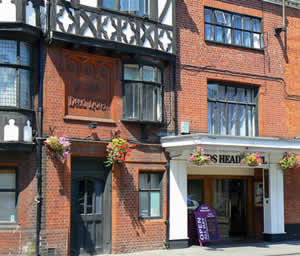 The Maids Head Hotel |
||||||
|
||||||
Norwich Tourist Information Centre, The Forum, Millennium Plain, Norwich, NR2 1TF. Tel: 01603 213 999 |
||||||
Car-parking can be found near the County Law Courts and Adam & Eve Pub (pay). |
||||||
|
Pocket Britain is optimised for use on a smartphone or tablet with internet access. All content is subject to copyright. All reasonable methods have been used to ensure information supplied is accurate at the time of publication. However, it is advisable to check information before relying on it. Privacy Policy |